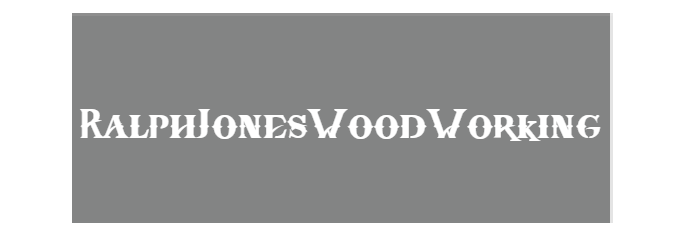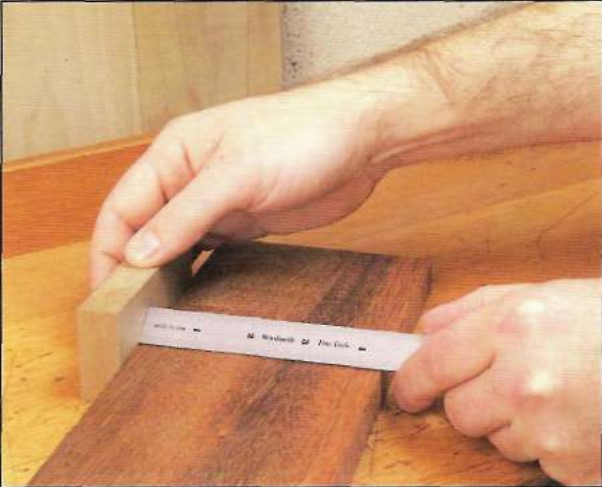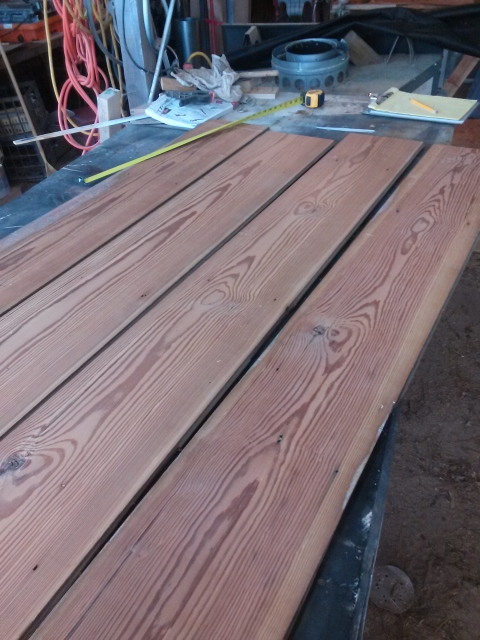If you were to ask most woodworkers what the foundation of accuracy is, they’d likely say the ruler, the tape measure, or the square. But I’ve always felt it’s the marking tools you choose. Granted, the rule, tape measure, and square are essential to precision; but without a clean, crisp marking tool, all their accuracy is for naught.
Pencils
The most c o m m o n marking tool in the shop is a pencil (top photo). A carpenter’s pencil is not suitable for intricate layout work; with its thick lead and cumbersome body, it’s best left forinitial layout of rough boards. Many woodworkers use a standard No. 2 pencil for their layout work. This is certainly better than a carpenter’s pencil, but it can still add significant errors to your work. The reason is that the line thickness varies as the lead wears (middle drawing). This might seem trivial, b u t it’s not. Say, for example, you’re laying out dovetails for a set of drawers. If you use a standard pencil, the lead will wear considerably. Unless you constantly sharpen it, you can introduce anywhere from 1/32″ to 1/16″ of error from start to finish (no wonder those dovetails don’t fit!). My choice for all-around layout work is a mechanical pencil with a 5 mm lead. This leaves a crisp, even line— even as it wears.
Marking knives
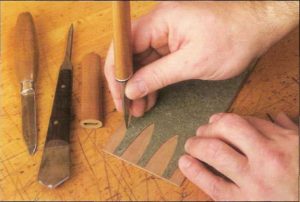
When accuracy is paramount, I reach for a marking knife (bottom photo). As long as it’s sharp, a marking knife produces an extremely fine line on aboard. On the plus side, this can help guide a chisel or saw during a cut. The downside to this is that cutting into the wood can leave marks that may need to be removed later.
In addition to pencils and marking knives, there are three other marking tools I like to have on hand in the shop: a lumber crayon, white marking pencils, and a chalk line.
Lumber crayons
A lumber crayon is designed to mark on rough-cut lumber (top photo). Though you can use a pencil for this, a lumber crayon will serve you better, especially if the wood isn’t completely dry. Pencil marks tend to absorb into the surface of the wood over time and disappear. A lumber crayon’s marks are impervious to this. As a matter of fact, most sawmills mark freshly cut wood with a lumber crayon before it goes into the kiln for drying; after the wood comes out, the crayon’s marks are still legible.
White pencils
Another nifty marking tool to have on hand is a white pencil for drawing on dark woods, where a pencil line would blend into the wood and be invisible (middle photo). White pencils can be found at most art centers as either a standard colored pencil, a grease pencil, or a marker. All of these work well, but I prefer a white colored pencil—just make sure to sharpen it frequently if accuracy is an issue.
Chalk lines
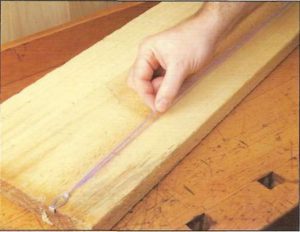
Chalk lines are useful for marking long, straight lines, such as when preparing rough stock or sizing longboards (bottom photo). Make sure to shake the chalk line before use to evenly coat the line, and then hook the end over the board at your mark. Stretch the line to the opposite end of the board and pull the line straight up a couple of inches; then let go to “snap” a line on the board.
